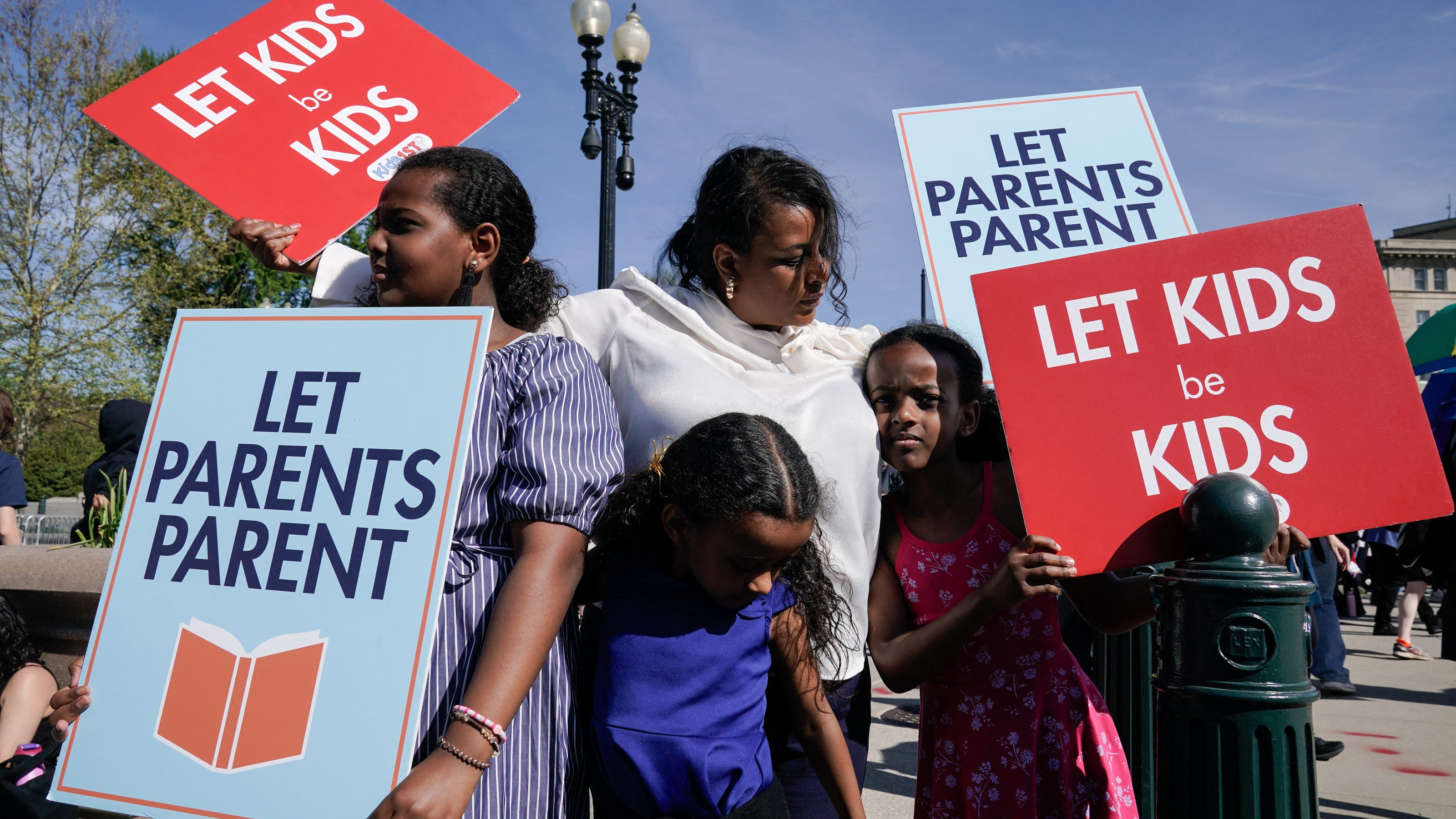High Court Weighs In: LGBTQ+ Books in Class – A Landmark Ruling
Editor’s Note: The High Court's decision regarding the inclusion of LGBTQ+ books in school curricula has been released today, sparking widespread debate. This article provides a comprehensive analysis of the ruling and its implications.
Why This Matters: The Fight for Representation and Inclusivity in Education
The High Court's decision on the inclusion of LGBTQ+ literature in school classrooms is far more than a legal battle; it's a pivotal moment in the ongoing struggle for inclusivity and representation in education. This ruling impacts how schools approach sensitive topics, the well-being of LGBTQ+ students, and the broader societal conversation around acceptance and diversity. This article will explore the key aspects of the judgment, analyze its potential consequences, and discuss the ongoing debate surrounding the role of literature in shaping young minds. Keywords: LGBTQ+ books, school curriculum, High Court ruling, education, inclusivity, representation, diversity, children's literature, parental rights.
Key Takeaways
| Takeaway | Explanation |
|---|---|
| Court's Decision: | [Insert concise summary of the court's decision - e.g., upholding/overturning a previous ruling, specific points addressed] |
| Impact on Schools: | [Insert summary of how the ruling impacts school policies and practices] |
| Parental Rights: | [Insert summary regarding parental rights and their role in curriculum selection] |
| Student Well-being: | [Insert summary of the court's consideration of LGBTQ+ students' well-being] |
| Future Implications: | [Insert summary of the long-term implications of this ruling] |
High Court Weighs in: LGBTQ+ Books in Class
The High Court's ruling on the inclusion of LGBTQ+ books in school curricula marks a significant turning point in the ongoing debate surrounding representation and inclusivity in education. The case, [Insert Case Name if available], centered on [Briefly state the core issue of the case - e.g., a challenge to a school's policy, a parent's complaint]. The court's decision highlights the complexities involved in balancing parental rights with the need to create a safe and inclusive learning environment for all students.
Key Aspects of the Ruling
The High Court's judgment addressed several key aspects:
- Age Appropriateness: The court considered the appropriateness of the chosen materials for different age groups, emphasizing the need for age-sensitive content selection.
- Curriculum Alignment: The ruling examined whether the inclusion of LGBTQ+ books aligned with the broader educational goals and objectives of the curriculum.
- Parental Rights: The court addressed the extent to which parents have a right to influence the curriculum their children are exposed to.
- Freedom of Expression: The judgment considered the balance between freedom of expression and the potential impact on students.
Detailed Analysis
Each aspect warrants a deeper examination. [Provide in-depth analysis for each of the above key aspects, including specific examples from the ruling and expert opinions. This section should be substantial, incorporating relevant case law and scholarly articles].
Interactive Elements
Age-Appropriate Content: Navigating Sensitive Issues
The question of age-appropriateness is central to this debate. Different age groups have varying levels of understanding and maturity, necessitating careful selection of materials. [Discuss the nuances of age-appropriateness in this context, offering examples of appropriate and inappropriate content. Include discussion of resources and guidelines available for educators].
Parental Involvement and Communication: Fostering Collaboration
Effective communication and collaboration between schools and parents are crucial for navigating this sensitive issue. [Discuss strategies for schools to communicate with parents about curriculum choices, and for parents to engage in constructive dialogue. Consider different perspectives and approaches].
People Also Ask (NLP-Friendly Answers)
Q1: What is the High Court's ruling on LGBTQ+ books in schools?
A: The High Court [summarize the ruling concisely, avoiding legal jargon].
Q2: Why is this ruling important?
A: This ruling significantly impacts how schools approach sensitive topics related to gender and sexuality, shaping the educational experiences of LGBTQ+ students and influencing broader societal conversations about inclusivity.
Q3: How does the ruling affect parental rights?
A: The ruling [explain how parental rights were addressed in the decision – e.g., affirmed, limited, balanced].
Q4: What are the challenges in implementing this ruling?
A: Challenges include [list several key challenges – e.g., differing interpretations, resource limitations, community resistance].
Q5: What resources are available for schools to implement this ruling effectively?
A: Schools can utilize [mention available resources – e.g., educational materials, training programs, legal counsel].
Practical Tips for Schools Addressing LGBTQ+ Inclusion
Introduction: These tips provide practical guidance for schools to navigate the inclusion of LGBTQ+ literature while adhering to the High Court's ruling and fostering a supportive learning environment.
Tips:
- Develop a clear and transparent curriculum selection policy.
- Provide professional development for teachers on LGBTQ+ issues and inclusive pedagogy.
- Create a safe and inclusive school climate through anti-bullying programs and LGBTQ+ support groups.
- Establish open communication channels with parents and families.
- Utilize age-appropriate and high-quality LGBTQ+ literature.
- Partner with LGBTQ+ organizations and community resources.
- Monitor and evaluate the effectiveness of the implemented policies.
- Ensure all students feel valued, respected, and included.
Summary: Implementing these practical tips will create a more inclusive and equitable learning environment.
Transition: Understanding the implications of this ruling requires careful consideration and proactive planning.
Summary (Resumen)
The High Court’s decision regarding LGBTQ+ books in the classroom underscores the importance of balancing parental rights with the creation of inclusive learning environments. The ruling's impact will be felt across schools, necessitating careful consideration of age-appropriateness, curriculum alignment, and open communication with parents.
Closing Message (Mensaje de Cierre)
This landmark ruling prompts us to reflect on the role of literature in shaping young minds and the responsibility we have to create a more inclusive and equitable education system for all students. How can we ensure that all voices are heard and respected in our classrooms?
Call to Action (Llamada a la acción)
Share this article to promote discussion on this important topic. Subscribe to our newsletter for updates on related legal developments.
(Hreflang tags would be added here, tailored to the specific languages required.)

